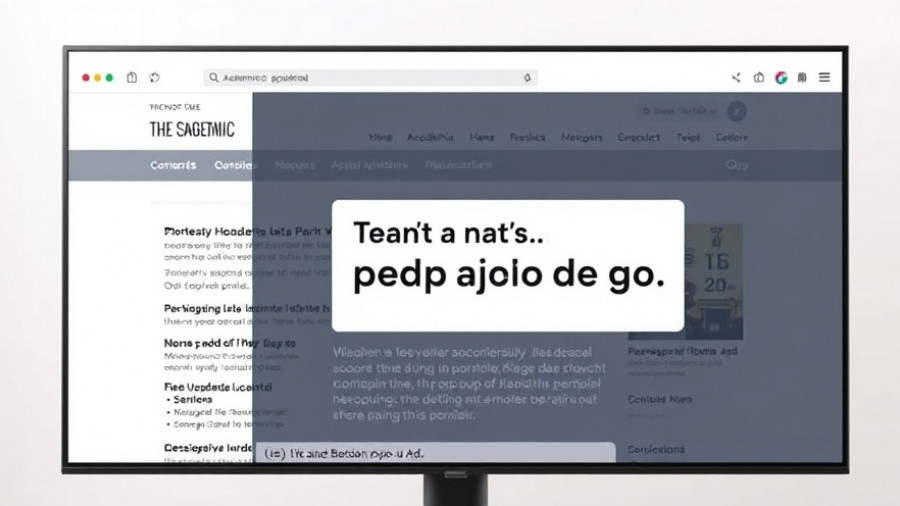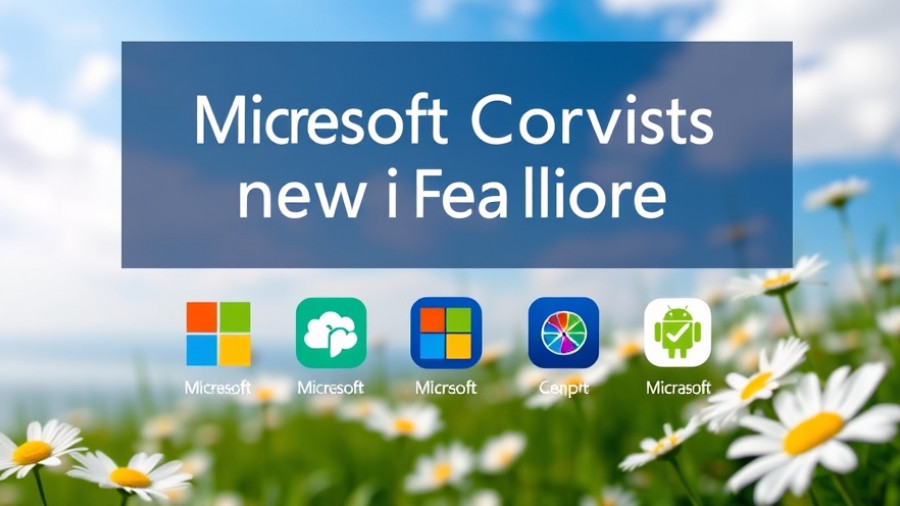
Microsoft's New Voice Mode: A Step Towards Effortless Interaction
In a bold leap into the future of artificial intelligence and user interaction, Microsoft is testing a new voice mode for its Copilot platform. This feature, now accessible directly from the Copilot home screen, is aimed at enhancing user engagement through hands-free communication. Imagine asking your digital assistant questions or giving commands while your hands are busy—this is the essence of the voice capability.
Privacy First: Introducing Private Chats
One of the most significant updates accompanying the voice mode is the addition of private chat functionalities. Users will soon have options to initiate private conversations, functioning much like the incognito mode in web browsers. This means users can communicate sensitive information without any concerns about data retention or misuse. As more individuals trend toward remote work and privacy-conscious interactions, this feature is timely, addressing a growing need for secure, discreet communication channels in professional settings.
A Transformational Approach to AI Interaction
These enhancements speak volumes about Microsoft's commitment to making AI tools more intuitive and user-friendly. The voice mode will allow users to receive real-time audio feedback, displayed alongside visual cues on the home screen. Users can expect a glowing prompt bar and animated avatars to indicate when Copilot is listening and responding. Such features are designed to cultivate an engaging environment, drawing users deeper into a conversational experience with AI.
The Power Behind Voice: Microsoft’s Advanced Audio Models
Leveraging its own in-house audio models, Microsoft is poised to bring these features to users swiftly. This strategy reflects the company's desire not only to lead in AI technology but also to ensure that user interactions feel seamless and natural. Such capabilities demonstrate an effort to carve a niche in the competitive landscape of AI productivity tools, where personal touch and innovative technology merge.
Future Predictions: Will This Change How We Use AI?
With these anticipated changes, we could see a major shift in how office workers and tech-savvy individuals interact with their devices. If users find the voice mode effective, it may set a new standard in AI communication, leading to more developments in hands-free technology. Companies like Google and Apple are also exploring similar avenues with their voice-activated services, making this a ripe field for competition and innovation.
Addressing Concerns: The Risks of Always-On Listening
While the allure of voice-activated AI is strong, it's essential to highlight the potential pitfalls, particularly regarding privacy concerns. The fact that the voice mode remains active while the home screen is displayed could lead to unintended records of sensitive conversations. Users must be vigilant about their surroundings and mindful of what they discuss near their devices.
The Importance of Continuous Adaptation in AI
The ongoing updates to Microsoft's Copilot demonstrate the dynamic nature of technology and user preferences. As AI applications integrate deeper into everyday life, adaptability will be key. Microsoft appears dedicated to listening to its user base, embodying a contemporary approach that aligns with our fast-paced world where immediate interaction is prioritized.
Conclusion: Exploring the Benefits of AI Interactivity
Understanding these innovations not only helps users navigate new tools but also emphasizes the evolving landscape of technology. By marrying voice features with privacy-conscious options, Microsoft positions itself to cater to modern needs while staying true to its roots in effective user experience. As these enhancements roll out, they invite a broader conversation about what users expect from AI interactions.
 Add Row
Add Row  Add
Add 




Write A Comment